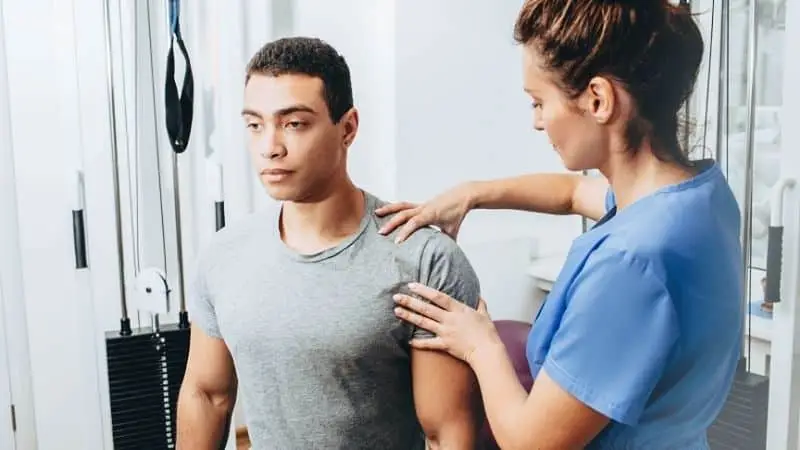Written By: Ken Bordfeld, PT , Clinical Director, SportsCare Eatontown
Instability is a common cause of shoulder pain and disability, especially among young, athletic individuals. The stability of any joint is dependent on many factors, such as the shape and congruence of the joint surfaces, the soft tissue “capsule” that surrounds the joint, and the surrounding musculature. Most instability problems occur when the joint capsule is too lax or if it is damaged.
The shoulder joint is comprised of two bones. The upper portion of the arm bone, which is called the humeral head. This represents the ball of this ball and socket joint. The end of the shoulder blade forms the socket of the joint. The socket of the shoulder joint is very small and shallow. As a result, the shape of joint surfaces allows a great deal of mobility in the shoulder, however, it does very little to make the joint stable.
The lack of bony stability in the shoulder makes the need for a strong joint capsule very important. In some individuals, the capsule is inherently weak and lax. This laxity allows for abnormal, excessive motion of the humeral head which leads to pain and dysfunction of the joint.
This is especially problematic for athletes who take their shoulder to extremes of motion such as in throwing. Many athletes will start out with a normal joint capsule, however, they may gradually damage and overstretch the capsule. This may lead to the development of capsular laxity and joint instability. A final cause of shoulder instability is trauma. The joint capsule can be torn from its attachment to the socket.
The treatment of shoulder instability is dependent on its cause. When a shoulder is unstable due to capsular laxity or overstretching, the cornerstone of treatment is physical therapy. The goal of physical therapy is to strengthen the muscles surrounding the shoulder joint.
In addition to strengthening, neuromuscular re-education drills are performed to ensure that the muscles fire in such a manner that affords joint stability during athletic endeavors. For many individuals, physical therapy along with adherence to a home exercise program is the only treatment required.
In the case of a capsular tear, your doctor may suggest surgery. The goal of surgery is to re-attach the capsule and restore normal stability to the shoulder. Following surgery, patients will attend physical therapy with the goal of restoring normal strength and mobility to the shoulder.
If you’re suffering from shoulder instability and would like to receive treatment, we encourage you to come by to the location of your choosing for a complimentary screening where we can assess your condition and come up with a treatment program tailored to your needs.


